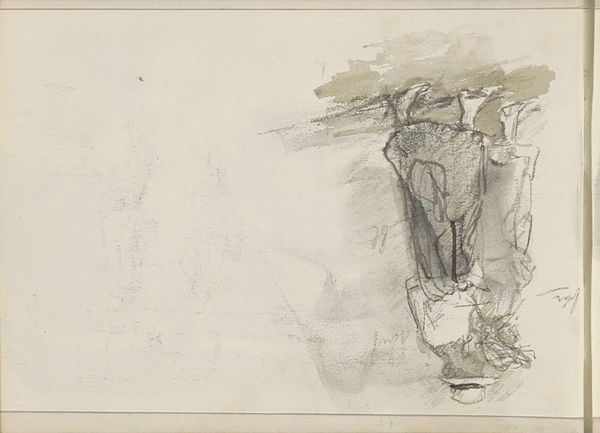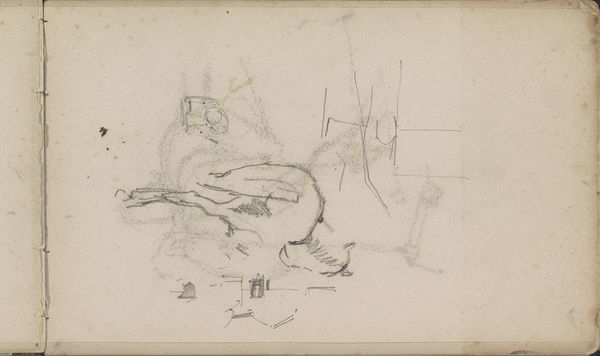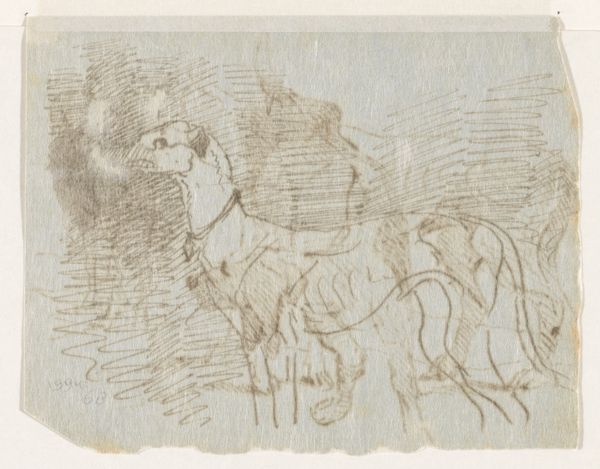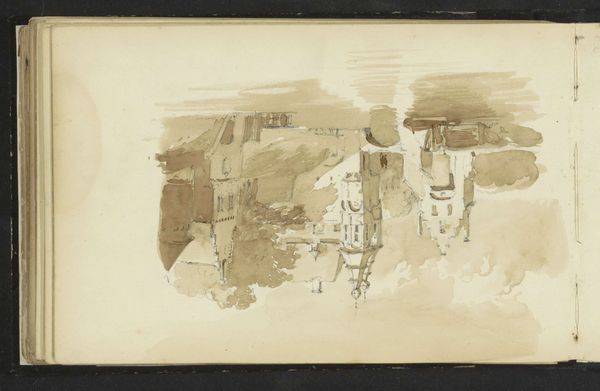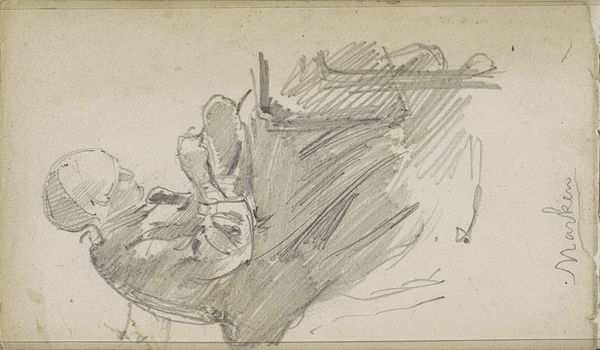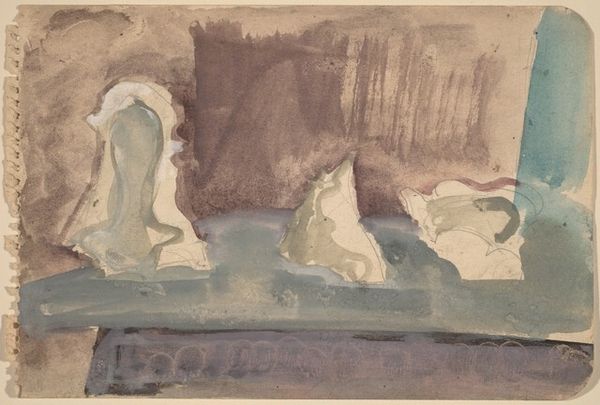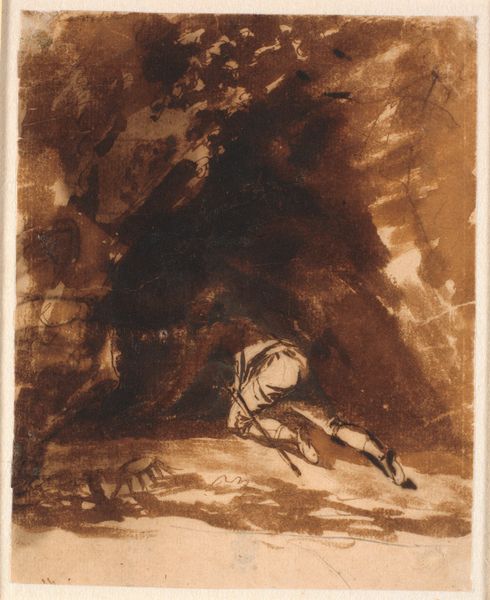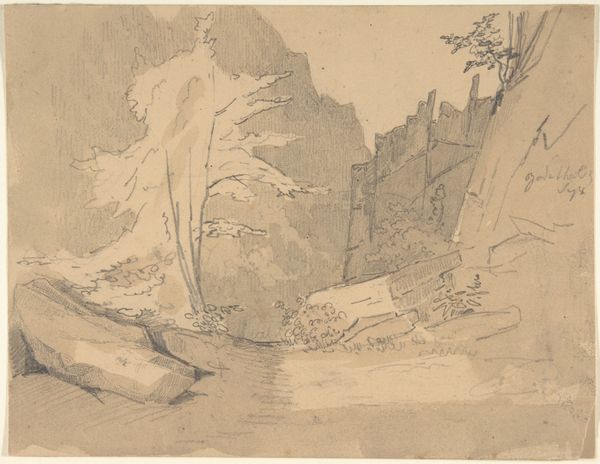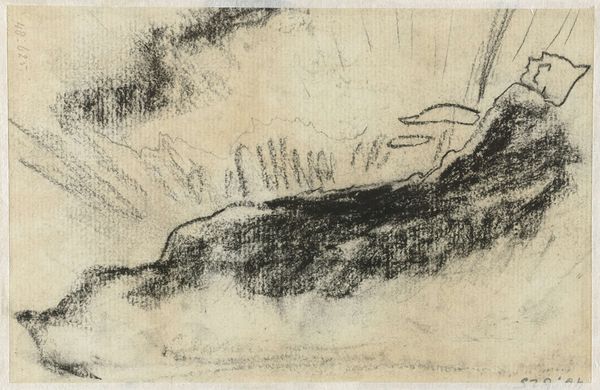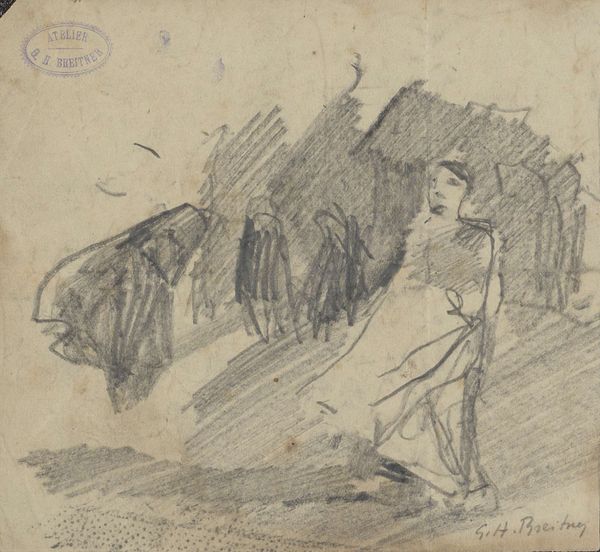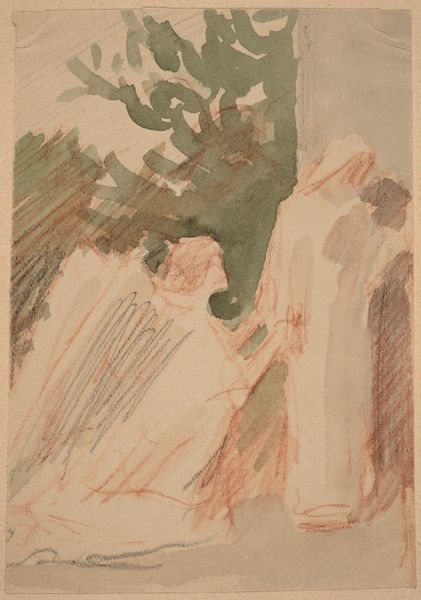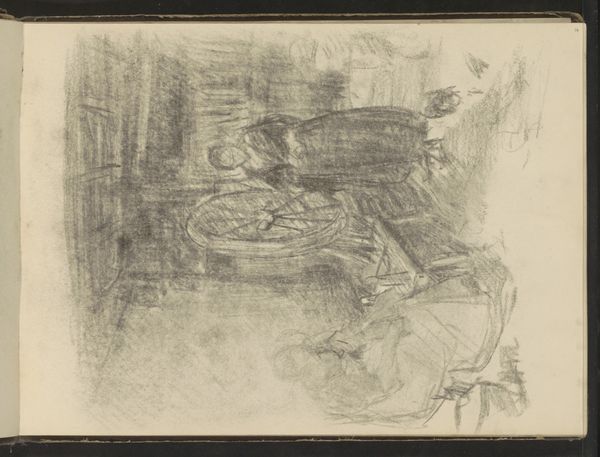
Dimensions: sheet: 5.5 × 9.1 cm (2 3/16 × 3 9/16 in.) mount: 46.1 × 30.2 cm (18 1/8 × 11 7/8 in.)
Copyright: National Gallery of Art: CC0 1.0
Editor: This is Charles Sprague Pearce's watercolor drawing, "Study for a Panel," created sometime between 1890 and 1897. It feels both ethereal and grounded, with that solitary figure set against the stark landscape. What do you see in this piece? Curator: For me, this work operates within the historical context of late 19th-century Romanticism while simultaneously inviting us to consider questions of identity and place. Who is this figure? Are they empowered or diminished by their setting? The muted palette is evocative of the past, but the almost abstract quality of the landscape opens up to modern interpretations. How might this isolation resonate with contemporary discussions of displacement, perhaps? Editor: That's interesting. I hadn’t considered displacement. I was so caught up in the aesthetic. But thinking about the social implications gives me pause. Curator: Exactly. Pearce isn't merely presenting a beautiful scene; he's inviting us to question the relationship between the individual and their environment, issues crucial to contemporary conversations around environmentalism and social justice. How does this figure claim or relate to this seemingly harsh landscape? Is it a space of refuge, or a space of alienation? Editor: I guess I see the landscape differently now, more like a character in itself, affecting the figure. The way the landscape overshadows the figure speaks to power dynamics. Curator: Precisely. And consider this work within the broader narrative of landscape art itself. Historically, landscapes have often served to legitimize claims of ownership and power. By stripping away those markers of dominion and leaving us with a sense of ambiguity, Pearce challenges those very assumptions. How can art challenge the concept of the "settler" in historical landscape? Editor: This has totally changed how I see this drawing. I thought it was just a pretty landscape, but it's clearly asking bigger questions about our relationship to the world. Curator: Absolutely, and by interrogating these historical works through a contemporary lens, we can expose not only the aesthetics of their production, but also, critically, the latent politics embedded in their artistic interpretation. It helps me connect historical art with contemporary life, and appreciate its impact.
Comments
No comments
Be the first to comment and join the conversation on the ultimate creative platform.
